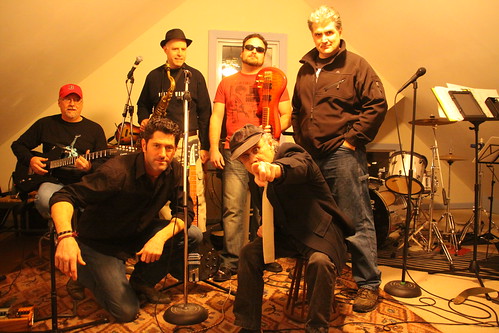 If you have been the main organizer for a technology-infused event that brings together people you want to bring together, you know know how much stress goes into it. You wake up early that morning and think: nothing’s going to work today. The Internet will be down. The computers will be funky. People will get lost and won’t show …..
If you have been the main organizer for a technology-infused event that brings together people you want to bring together, you know know how much stress goes into it. You wake up early that morning and think: nothing’s going to work today. The Internet will be down. The computers will be funky. People will get lost and won’t show …..

That was me, yesterday morning (earlier than I want to say), as we held our Western Massachusetts Writing Project event that focused in on pop culture, technology and writing and the Common Core standards (now adopted by our state). Everything was perfect, though. The host school — West Springfield Middle School — is a fabulous facility, with three adjacent spaces that we used; almost everyone who signed up, arrived (and then some); our high school students who we brought in as our keynote speakers were fabulous; and the participants (about 25 people plus about 8 WMWP presenters) felt as if they could have used a few more hours exploring the themes and sites we shared with them.
Our technology team at WMWP led the event, with presenters coming from our ranks, and we explored the literacy in the lives of our students outside of school, the impact of technology on learning, and then breakout sessions took place for social networking (with Edmodo), digital storytelling (with Animoto and Voicethread), and gaming (with Gamestar Mechanic). Lots of people wanted the digital storytelling session, so we had some juggling to do, and it reminds us that teachers are looking for writing to be the very center of student work. There is high interest right now in digital storytelling, and free tools (which is what we focused on). We also made connections between our event and the national Digital Learning Day that just passed.
Our keynote speakers were from an organization called Video Vanguard (part of a Youth Action Coalition), and the two high school students were articulate and passionate and insightful about the ways that young people use media and technology. They shared a video project they recently completed in which they traveled to New York to observe the Occupy Wall Street movement, and focused a video on gender inqualities in the workplace. They interviewed people on the streets, and edited it into a powerful 5-minute video. It was full of researched information, and point-of-view, and video composition. What a great piece of art to share.
And it set the tone for the day, too, particularly when the students urged us teachers to “pay attention” to our students, and to find out what they are doing by forging personal relationships with them. Make connections, they told us, and ask questions. “Personal connections. It makes a difference,” Katie said.
Peace (in the sharing),
Kevin
